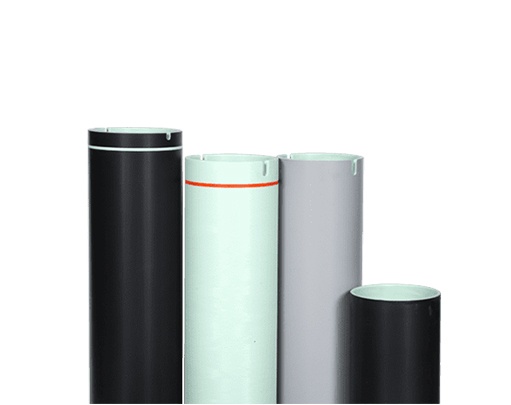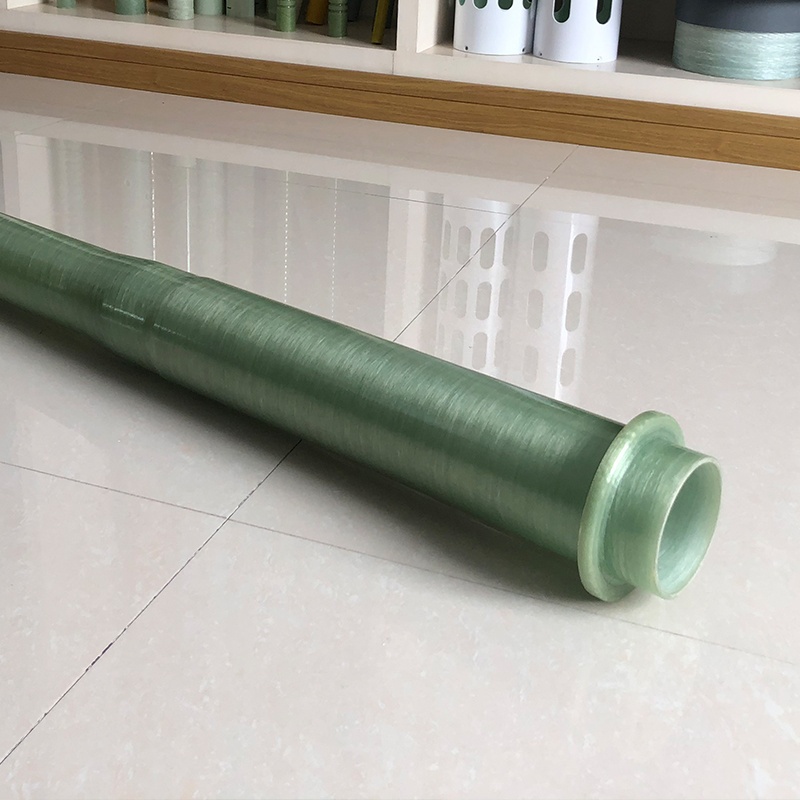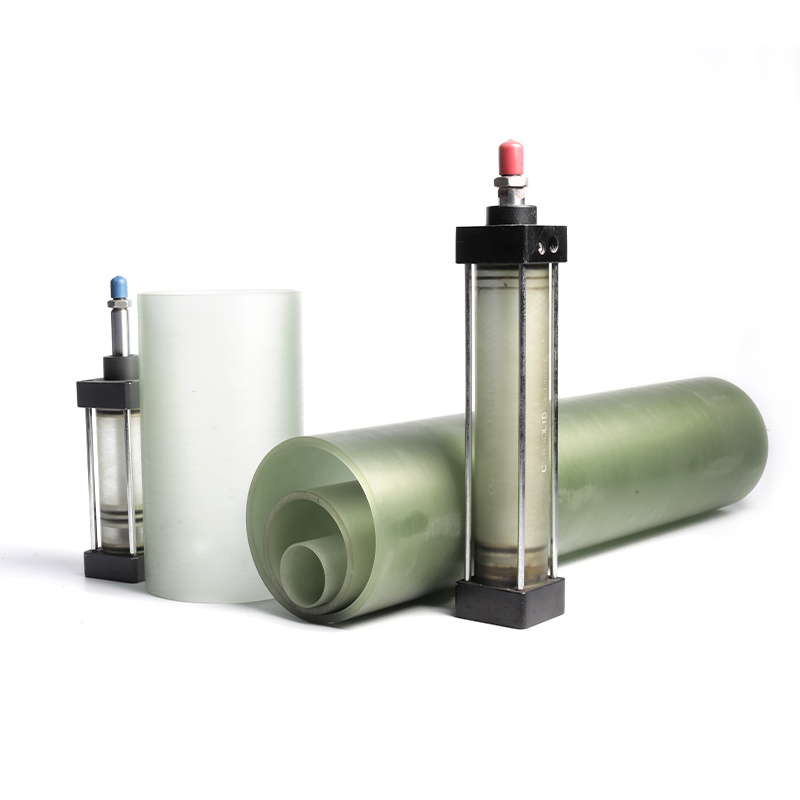How FRP tubes are changing the game in the construction industry
I. Introduction
With urbanization and population growth, there is an increasing demand for the construction industry. The development of the construction industry requires economical, efficient and sustainable building materials. And with the continuous advancement of technology, a new construction material is receiving more and more attention, which is FRP pipe.
FRP pipe is a kind of pipe made of glass fiber reinforced plastic, which has the advantages of light weight, high strength and corrosion resistance. In the construction industry, FRP tube have been widely used in the reinforcement of buildings, bridges, underground piping systems and wind turbine towers. Next, we will introduce the advantages, applications, future prospects, challenges and limitations of FRP pipes in construction in detail.
Advantages of FRP pipes in construction

FRP pipe, as a new material, has many advantages in the construction field. The following is a detailed description of these advantages:
1. Lightweight and easy to handle
FRP pipe is much lighter in weight compared to traditional pipe. This means that it is easier to handle and install, while also reducing construction stress and time.
FRP pipe is lighter in weight and easier to handle and install than traditional pipes such as steel and cement pipes. Therefore, the use of FRP pipe can significantly reduce labor costs and increase construction efficiency.
2. Corrosion and chemical resistance
One of the advantages of FRP pipe in construction is its resistance to corrosion and chemicals. Since various chemicals and wastewater often need to be handled in construction projects, the material used for underground pipes and other pipelines needs to have excellent corrosion resistance. FRP pipes are perfectly suited to meet this requirement.
3. High strength-to-weight ratio
FRP pipes have a higher strength-to-weight ratio than conventional pipes. They are comparable to metal in strength, but do not suffer from problems such as rusting during use, and they are much lighter in density than metal.
4. Easy to customize and install
The production process of FRP pipes is flexible and can be manufactured in various sizes and dimensions as needed, which is very important in modern architectural design. It is easy to install due to its ease of cutting and processing.
Application of FRP pipe in construction

1. Reinforcing Concrete Structures
FRP pipes can be used to reinforce concrete structures such as reinforced concrete columns and beams. the high strength-to-weight ratio of FRP pipes is ideal for bending and shear reinforcement, which can better improve the stiffness and strength of the structure.
2. Bridge construction
FRP pipes are increasingly used in bridge construction. They are mainly used to strengthen girders and piers to improve the durability and load-bearing capacity of bridges. The use of FRP pipes can also extend the service life of bridges, reduce maintenance costs and improve the safety of bridges.
3. Underground piping system
Because of the excellent corrosion and chemical resistance of FRP pipes, they are widely used in the construction of underground pipeline systems. In urban drainage systems and water supply systems, FRP pipes can withstand huge water pressure and maintain a long service life.
4. Wind Turbine Towers
FRP pipes are gaining attention in the construction of wind turbine towers. Traditional concrete and steel structures are not only heavy, but also take longer and costlier to build. Using FRP pipes can greatly reduce the construction time and cost, while providing better durability.
Future prospects of FRP pipes in construction
With the development of construction industry and technological progress, FRP pipe as a new type of material has a great prospect of application in construction. The following are the details of the future prospects of FRP pipes in construction:
1. Increased demand for sustainable building materials
Environmental protection and sustainability are hot topics in modern society. Based on the consideration of environmental protection, the construction industry is looking for more environmentally friendly and energy-saving construction materials. FRP pipes meet the requirements of sustainable construction materials with their light weight and corrosion resistance, which are in line with the future development direction of the construction industry.
2. Development of new technologies and applications
At present, the application of FRP pipe is still subject to some limitations. However, with the continuous advancement of technology and the expansion of applications, these limitations will be gradually resolved. For example, standardization can help promote the production and use of pipes, and the production technology of large diameter pipes will become more mature to ensure the production of pipe products with stable performance.
3. Cooperation with other industries
FRP pipes are widely used not only in the construction industry, but also in other fields such as aerospace industry, marine engineering and automobile manufacturing. This means that FRP pipes have a broader application prospect while improving the quality of construction. Cooperation with other industries can widen the application field of FRP pipes and improve their economic benefits.
4.Light weight and high strength
FRP pipe has the characteristics of light weight and high strength, which makes it very popular in the construction field. Due to its light weight, it can reduce the self-weight of the building and improve the overall stability. And the high strength can ensure the safety and reliability of the building structure.
5. Strong corrosion resistance
6. Easy to manufacture, customize and install
The production process of FRP pipe is relatively simple, and it can also be customized into different diameters, lengths and strength levels as needed, so it is very easy to use. In addition, FRP pipes are flexible in terms of connections and can be arranged on site without welding.
7. Sustainable development
Based on the above factors, the application of FRP pipes in the construction field has a very promising future. In the future, as technology continues to advance and the market continues to expand, the specifications, quality and application range of FRP pipes will be further improved, bringing more opportunities and changes to the construction industry.
Challenges and limitations of FRP pipes in construction
Although FRP pipes are widely used in construction as a new material, there are still some challenges and limitations. The following are the main challenges and limitations of FRP pipe in construction:
1. High initial cost
The initial cost of FRP pipe is relatively high compared to traditional pipe. This has discouraged some customers from choosing cheaper pipes with poor strength to weight ratios. However, considering the economic benefits of FRP pipe in terms of longevity and reduced maintenance work, its cost will gradually be accepted by the general public.
3. Lack of standardization
There are many brands in the FRP pipe market, but there is a lack of application standards. Due to the lack of standardization, the performance and quality of FRP pipes vary from brand to brand. This has brought some inconvenience to users and also caused impact to company image and market competition.


